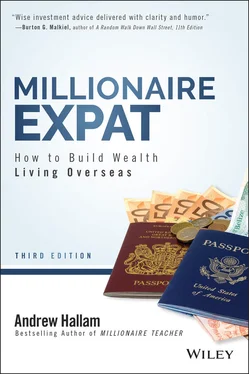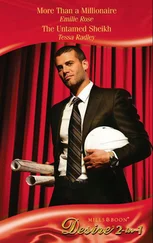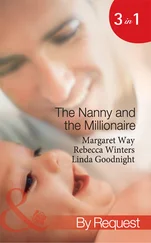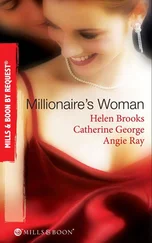Your Investment Time Horizon Is Longer Than You Think
A few years ago, I met a 50‐year‐old Canadian woman who lives and works in Ethiopia. “I need to take bigger risks with my money,” she said, “because I'm only going to be investing for 15 years. I want to retire when I'm 65.” She failed to realize, however, that if she retires at age 65, her investment duration isn't 15 years. If she lives until she's 85, her investment duration would be 35 years. Investment lifetimes have two phases. That's why she shouldn't take unnecessary risks .
The first is an accumulation phase. This is when we're working and adding money to our investments. The second stage is a retirement (or distribution) phase. The day we retire isn't the day we sell our investments, hold a massive party with the proceeds, and drink tequila until we puke. We need to keep our money invested, so we can sell pieces of it to cover our costs of living. That money should keep growing so we can continue to live off its proceeds (see Chapter 14 ) .
That's why a 50‐year‐old investor's time horizon could be 35 years or longer. A 40‐year‐old investor's time horizon could be more than 45 years .
Why Average Returns Aren't Normal
If we look at various 30‐year investment periods, global stock markets have averaged 9 to 11 percent per year. But individual calendar year returns that land precisely within that range are about as normal as a two‐headed poodle.
During my lifetime, it has happened once. Global stocks gained 10.06 percent in 1987 (See Table 1.1).
It's much the same for the US stock market. Between 1970 and 2020, US stocks recorded calendar year gains between 9 and 11 percent just twice. In 1993, they gained 10.1 percent and in 2004, they earned 10.9 percent. The rest of the time, stocks soared, sank, or sputtered. 1
US stocks averaged 10.68 percent between 1970 and 2020, but single‐year performances were schizophrenic. On 10 occasions, US stocks recorded annual losses. On the flip side, stocks gained 25 percent or more during 12 other calendar years. Stock market volatility is normal and it always will be.
The S&P 500 is a common measurement of the US stock market. It includes 500 selected large‐company stocks. The composition of the index doesn't change much year to year. Some people measure the growth of US stocks by the Dow Jones Industrials. It represents 30 massive stocks, selected for their size and robustness. Sometimes, people reference the Wilshire 5000. It tracks more than 6,700 publicly traded US stocks. It's the most complete measurement of how US stocks perform. But over long periods of time, the S&P 500, the Dow Jones Industrials, and the Wilshire 5000 produce similar results .
When the Stock Market Beats Real Estate
I'm a huge fan of investment real estate. Buy a two‐, three‐, or four‐unit home and reap income from every tenant (single family homes are far less efficient). Once you've saved for the down payment, let the tenants pay your mortgage.
This isn't a book about real estate investing. To do the topic justice would require a whole new book. But I do want to show how stock market growth might be better than you think.
Take one of the world's hottest real estate markets: Vancouver, British Columbia. Referencing figures from the Real Estate Board of Greater Vancouver, CBC News reported that the average detached Vancouver home sold for $368,800 CAD in 1994. By 2021, it was worth $1.83 million. 2 That's a massive gain of 396 percent over 27 years.
In contrast, if someone had invested $368,800 in a Canadian stock index, it would have grown to $2,865,576 by December 31, 2020, measured in Canadian dollars. 3
If you had invested $368,800 in a US stock index, the money would have grown to $4,853,408 by December 31, 2020, measured in Canadian dollars. 4
I'm not suggesting that stocks were a better investment than Vancouver real estate over the past 27 years. Investors can borrow to buy real estate and leverage their gains. They can also rent their properties, creating cash flow in the process.
But anyone who kept a cool head, kept investment fees low, and invested regular sums in the stock market over the past 27 years would have done a lot better than most people think. I'll show you how to do that.
What's Inside a Global Stock Market Index Fund?
A global stock market index represents the entire world's stocks. Roughly 55 percent of its holdings are US stocks. Roughly 20 percent are European stocks, 15 percent are Pacific stocks, and about 10 percent comprise emerging market stocks. This isn't a strategic composition. It represents a weighting based on something called global market capitalization. For example, if we had the power to sell every single stock market share in the world, about 55 percent of the proceeds would come from US stocks, 20 percent from European stocks, 15 percent from Pacific stocks, and about 10 percent from emerging‐market stocks. That's why a global stock market index holds global shares in these proportions. 5
Undressing Stocks with 50 Shades of Gray
You might wonder how money grows in the stock market. Such profits derive from two sources: capital appreciation and dividends. Let me explain with a story.
Imagine you've started a business called Fifty Shades, designing and manufacturing sexy underwear for men and women. After signing seductive advertising deals with Madonna and Miley Cyrus, sales thrust upward across every female age demographic. But as the company's CEO, you recognize a problem. Fruit of the Loom is spanking you silly in sales to aging Baby Boomer males. Only one solution makes sense: Sign Sylvester Stallone to a multiyear television‐advertising contract. He could dance around a boxing ring, wearing Fifty Shades skivvies while pounding away at Siberian‐sized strawberries and apples.
Such advertising should increase sales, but then you'll need to meet the product demand. New factories will be required; new distribution networks will be needed. They won't be cheap. To make more money, you're going to need more money.
So you hire someone to approach the New York Stock Exchange, and before you know it, you have investors in your business. They buy parts of your business, also known as shares or stock. You're no longer the sole owner, but by selling part of your business to new stockholders, you're able to build a larger, more efficient underwear business with the shareholder proceeds.
Your company, though, is now public, meaning the share owners (should they choose) could sell their stakes in Fifty Shades to other willing buyers. When a publicly traded company has shares that trade on a stock market, the trading activity has a negligible effect on the business. So you're able to concentrate on creating the sexiest underwear in the business. The shareholders don't bother you, because generally, minority shareholders don't have any influence in a company's day‐to‐day operations.
Your underwear catches fire globally, which pleases shareholders. But they want more than a certificate from the New York Stock Exchange or their local brokerage firm proving they're partial owners of Fifty Shades. They want to share in the business profits. This makes sense because stockholders in a company are technically owners.
So the board of directors (who were voted into their positions by the shareholders) decides to give the owners an annual percentage of the profits, known as a dividend. This is how it works. Assume that Fifty Shades sells $1 million worth of garments each year. After paying taxes on the earnings, employee wages, and business costs, the company makes an annual profit of $100,000. So the company's board of directors decides to pay its shareholders $50,000 of that annual $100,000 profit and split it among the shareholders.
Читать дальше












